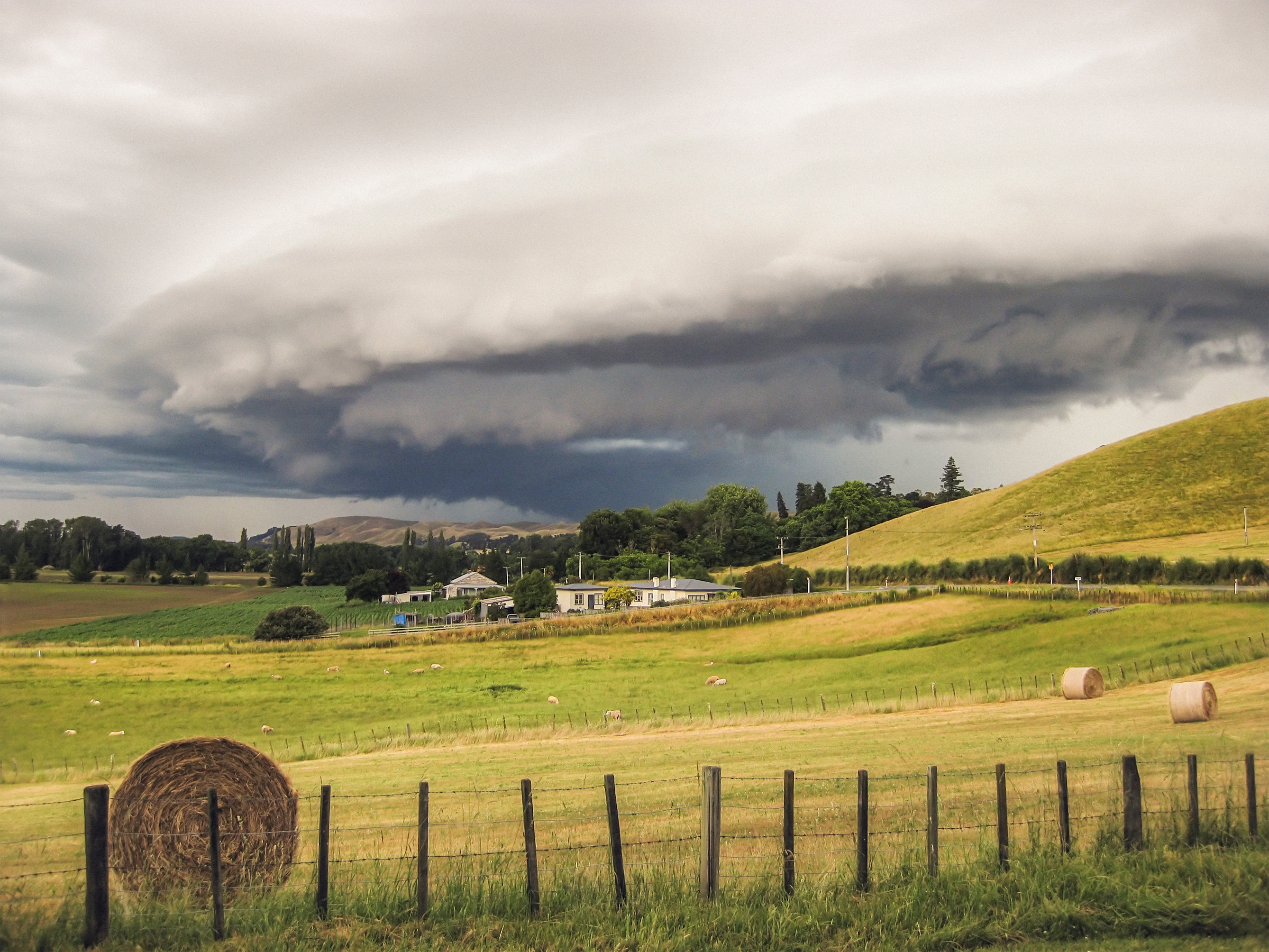Feature article
Home insurance in NZ: A simple guide
Understand your cover, avoid the pitfalls, and protect your place.
5 November 2025

When you own a home in Aotearoa, New Zealand, house insurance is your ultimate safety net. You pay a regular premium and, if the worst happens — fire, storm, flood, or quake — your insurer steps in to fix or rebuild.
Simple, right? Well, mostly.
Because New Zealand is no stranger to natural disasters, we’ve got a slightly unique setup. Every homeowner has two layers of protection: your private house insurance policy, and Natural Hazards Cover from Toka Tū Ake – Natural Hazards Commission (NHC). Your insurer manages the claim, while NHC helps cover the natural-disaster side of things. We’ll explain how that works shortly.
Here’s your simple guide to house insurance in NZ - what it covers, how it works, and how to make sure you’re properly protected.
What you’ll learn
- How does house insurance work in NZ?
- What does house insurance cover?
- How much should you insure your house for?
- Comparing home insurance options
- House insurance FAQs
House vs contents insurance: A quick clarification
While these two are often lumped together, there is a clear differentiation.
House insurance covers damage to the structure itself: walls, roof, built-in kitchen fittings and flooring.
Contents insurance covers damage to or theft of your personal belongings and anything you could carry out, from your TV and clothes to your blender and bike.
Think of it this way: if you flipped your house upside down, whatever falls out is covered by contents insurance. Anything that stays put? That’s house insurance.
Most Kiwi homeowners bundle the two for a discount. That said, if you’re a tenant, you probably don’t need house insurance, but it’s well worth insuring your personal contents.
What is and isn’t typically covered
Most NZ house insurance policies offer replacement cover, meaning your home will be rebuilt or repaired to the same standard as before. Every policy is different, but here’s what most house insurance in NZ covers and what it doesn’t.
Typically covered:
- Sudden events like fire, storm, flood, or theft
- Accidental damage, such as drilling through a pipe or dropping something heavy on the floor
- Temporary accommodation if your home becomes unliveable - a lifesaver when you need it most
- Gradual damage may be covered under special conditions
Common exclusions:
- Wear and tear: gradual damage like old leaks or corrosion
- Pests: damage caused by rats, mice, or insects
- Vacant homes: policies can lapse if you’re away more than 60 days without telling your insurer
How much should you insure your house for?
While your insurer may give you guidance or an online calculator to help, it’s ultimately up to you to decide how much to insure your house for.
Most NZ insurers now use a sum insured model. This is a single dollar figure that represents the maximum your insurer will pay to rebuild your home.
It’s one of the most important numbers in your policy, and getting it wrong (especially being underinsured) can be financially devastating if you ever need to make a big claim.
What is sum insured?
Your sum insured is not your home’s market value because that includes the land. Instead, it’s what it would cost to rebuild your home from scratch. The goal is to find a balance between having enough cover to rebuild completely, without paying more than you need to in premiums.
Your sum insured should include:
- Rebuild costs: materials, labour, and updates to meet current building codes
- Demolition and debris removal: clearing the old site can cost tens of thousands
- Professional fees: architects, engineers, surveyors, and council consents
- Other structures: retaining walls, driveways, fences, pools, and decks
The best first step is using an independent tool like the Cordell Sum Sure Calculator (used by many NZ insurers). If your home is complex, old, or architecturally designed, it’s worth getting a quantity surveyor to provide an accurate figure.
Tip: Review your sum insured amount every couple of years, building costs and inflation can change fast.
Insurers changed their cover models following the Christchurch earthquakes.
Why insurers switched to the ‘Sum Insured’ model
After the Christchurch earthquakes, insurers realised that the old “total replacement” model left them open to huge and unpredictable rebuild costs. The sum insured system was introduced so insurers could set a clear maximum payout.
That change also shifted responsibility for estimating rebuild costs from the insurer to the homeowner. It means you’re now the one who needs to get your rebuild estimate right, otherwise you risk being underinsured if disaster strikes.
Alternative models
A few insurers still offer area-replacement or full-replacement cover. These policies pay all reasonable rebuild costs based on your home’s size (square metreage), rather than a capped sum insured amount.
They usually come with a higher premium, but some homeowners prefer the peace of mind that they’ll be fully covered, no matter what building costs do.
Where does Natural Hazards Cover fit in?
If you have house insurance that includes fire cover, you automatically get Natural Hazards Cover through Natural Hazards Commission Toka Tū Ake (NHC) - the government’s natural disaster insurer.
NHC covers your home for natural disasters such as earthquakes, landslides, volcanic eruptions, hydrothermal activity, and tsunamis. It also provides limited cover for storm or flood damage to land (but not the house itself).
Here’s how it works:
- NHC pays the first portion of damage to your home, currently up to $300,000 + GST.
- Your private insurer covers the rest, up to your sum insured amount.
- You only deal with your insurer, who manages the whole claim (including the NHC part).
Together, NHC and your private policy ensure you’re protected if a natural disaster hits. The NHC provides the foundation and your insurer covers everything above it, so your home can be fully rebuilt or repaired.
Read more about how natural disaster cover works in NZ.
Comparing home insurance options
Let’s be honest - no one wants to read multiple 40-page policy documents. But taking time to compare house insurance in NZ can save you serious money and stress down the track.
We’ve made it easier: we collected policy wordings from ten major NZ insurers and asked AI to summarise the key features. It’s all in one handy visual template so you can highlight what matters, remove what doesn’t, and add your own quotes.
Get your copy of the comparison chart here: NZ House Insurance Comparison Template [Google Sheets]
Important: AI is smart, but not perfect. Always double-check the details before making any decisions, and note that policies may change over time.
Choosing the best house insurance provider
According to Consumer’s annual insurance satisfaction survey, MAS and FMG have been crowned ‘The Best’ - both earning Consumer’s People’s Choice award (and have done for almost 10 years).
Ultimately, there’s no single “best”, as it will depend on your individual situation. Look for:- a realistic sum insured
- an excess you can afford
- a strong financial rating
- good reviews for claims support
- and discounts for bundling.
Take your time and compare quotes. It’s worth it in the long run.
Customer reviews and accolades
The best policy in the world means nothing if the customer service is a nightmare.
When you’re standing in ankle-deep water, you want a claims team that answers the phone, not a chatbot sending you in circles.
Check reviews for how insurers handle claims: response times, empathy, and ease of payout. It’s the truest measure of how “covered” you really are. We have gathered reviews and accolades for each provider and added a row to our NZ House Insurance Comparison Chart.
House Insurance NZ – FAQs
What is an excess in house insurance?
Your excess is what you pay when making a claim.
If your excess is $1,000 and the repair costs $10,000, your insurer pays $9,000.
Higher excess = lower premium, but make sure it’s still affordable in a pinch.
What is a financial strength rating?
It’s your insurer’s report card.
A rating from AM Best or Standard & Poor’s shows how likely they are to pay up when disaster hits. Anything rated A or above shows they are financially sound. Below that? Proceed with caution.
Why are my house insurance premiums going up?
You’re not imagining it, everyone’s are. Here are some of the contributing factors:
- Global reinsurance costs: insurers insure themselves too, and those costs have risen.
- Building inflation: materials, labour, and freight are all pricier.
- Risk-based pricing: insurers now price by address, so flood-prone or coastal spots often pay more.
Does house insurance cover natural disasters in NZ?
Yes. NHC covers the first $300k + GST of natural-disaster damage, and your private insurer covers the rest up to your sum insured.
Is my house covered while being renovated?
Small reno? Usually yes. Big reno (tearing out walls or a roof)? You’ll likely need a “contract works” policy. Whether it’s big or small, always tell your insurer before you start.
Can I get a discount for bundling policies?
Definitely. Most insurers offer multi-policy discounts for combining house, contents, and car. Easy win.
What’s the difference between replacement value and market value?
Replacement value = the rebuild cost of your home.
Market value = what it’s worth on the property market (including land).
Your policy covers the first one, not the second.
Disclaimer: This article is for general information only and is not financial or insurance advice. We’ve done our best to ensure the details are accurate and up to date, but policies and pricing can change. Always check directly with your insurer or a qualified adviser before making decisions about your cover.
Author
Other articles you might like









